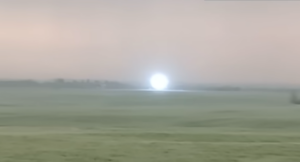The strange rock formation, curling like a breaking wave, is common in Western Australia, but this is the biggest of them all.
In Australia, the ocean is not the only place where you can catch a wave. Just three kilometres east of the unassuming town of Hyden, in Australia’s Golden Outback, is a spectacular wave that never breaks and is completely frozen in time.
Wave Rock has played a role in the lives of Australian Aborigines over the years. The Ballardong of Western Australia believed that the Wave Rock was created by a rainbow serpent, which carved out the wave by dragging her body to a waterhole.

Light influences the appearance of Wave Rock. Photo: Shutterstock
The granite formation closely resembles a wave just about to break. The site was made famous in the 1960s after a National Geographic article. Geologists have dated the rock as 2.63 billion years old, long before dinosaurs roamed the Earth.
It is 15m high and 110m long and forms the north side of Hyden Rock, a large inselberg, a German word meaning island mountain, and which refers to a hill rising unexpectedly from a level plain. Hyden Rock began forming during the Cretaceous Period over 100 million years ago when Australia broke away from Antarctica.
Geologists classify Wave Rock as a flared slope, a concave bedrock surface at the base of the inselberg. Its odd shape comes from two main processes: weathering and erosion.

The inselberg and Wave Rock from above. Photo: Sky View Aerial Videography
Chemical weathering of the softer rock at the base by groundwater did most of the work, while erosion from wind and rain added further touches. Its characteristic red, yellow and grey stripes are typically iron hydroxide, carbonates, and other chemical compounds that rain washes down the slope.

Walkabout on the wave. Photo: Shutterstock
Hyden Rock is a part of the Yilgarn Craton landmass, which formed 2.8 to 2.5 billion years ago and makes up all of Western Australia. David Newsome of Murdoch University states that the landmass’s absence both of volcanoes and tectonic formation of mountains cause Wave Rock’s shape. The rock wore away slowly over the simple passage of time, rather than from the chaotic forces of magma and tectonic upheaval. Newsome hypothesizes that more wave rocks are forming beneath the surface, but don’t hold your breath: They will take an additional million years to form. However, other, smaller formations are common in Central and Western Australia.
This is not the only great wave in the world. In Arizona, a similar geological wonder lies within a canyon of Navajo sandstone. Unlike Wave Rock, this sandstone was mostly shaped by the wind rather than underground weathering.
Both Australia’s Wave Rock and the Wave in Arizona draw photographers, who photograph the surface’s ever-changing colors as the light advances during the day. Wave Rock tempts skateboarders and cyclists, but that requires permission, which the park rarely gives, except for professional productions. BMX rider Danny Campbell was one of them, and the rough rock shredded his tires to the stitching by the end of the shoot.






